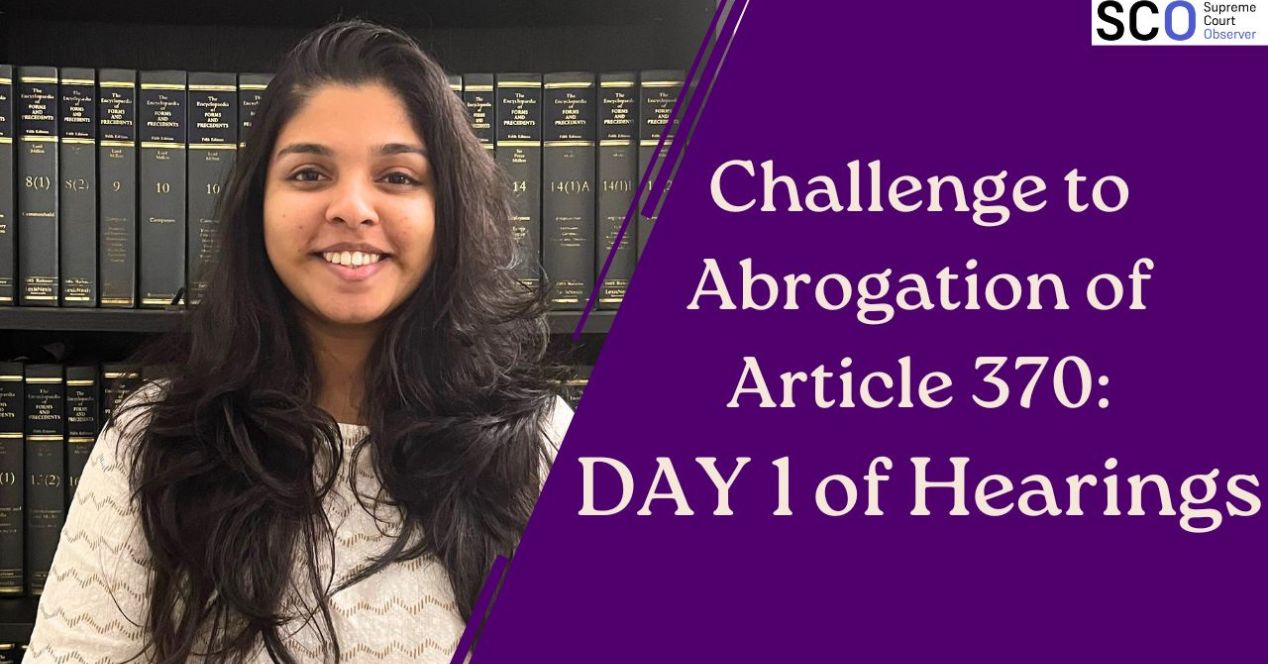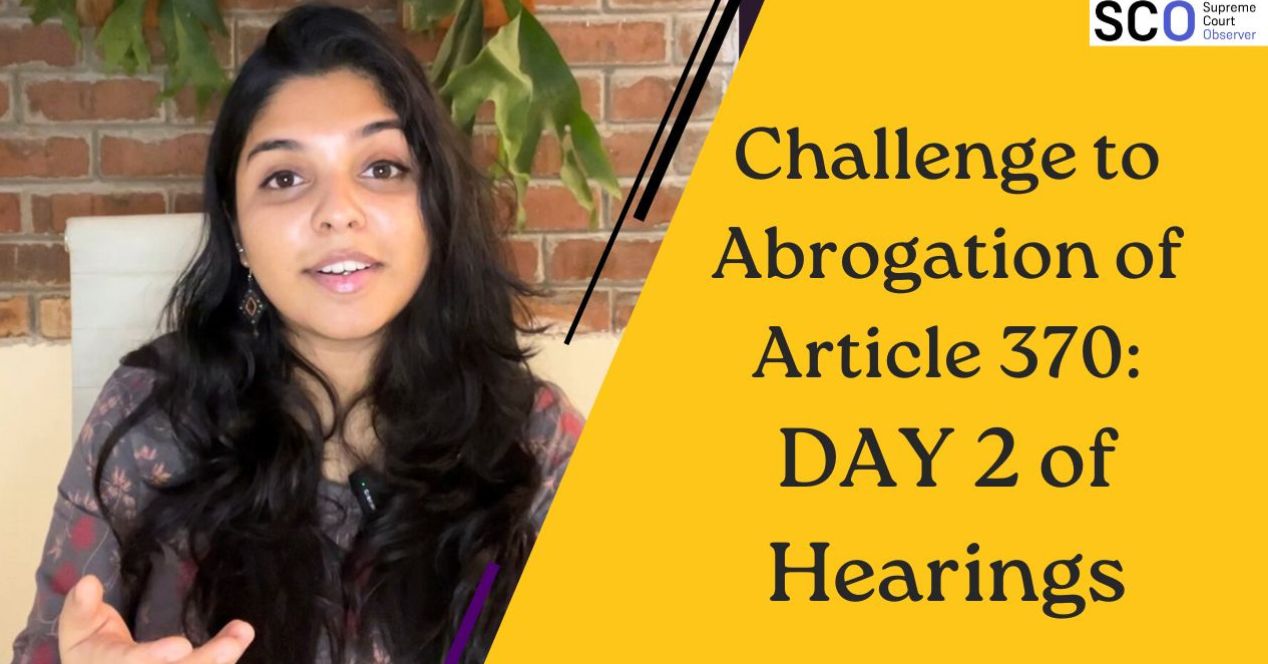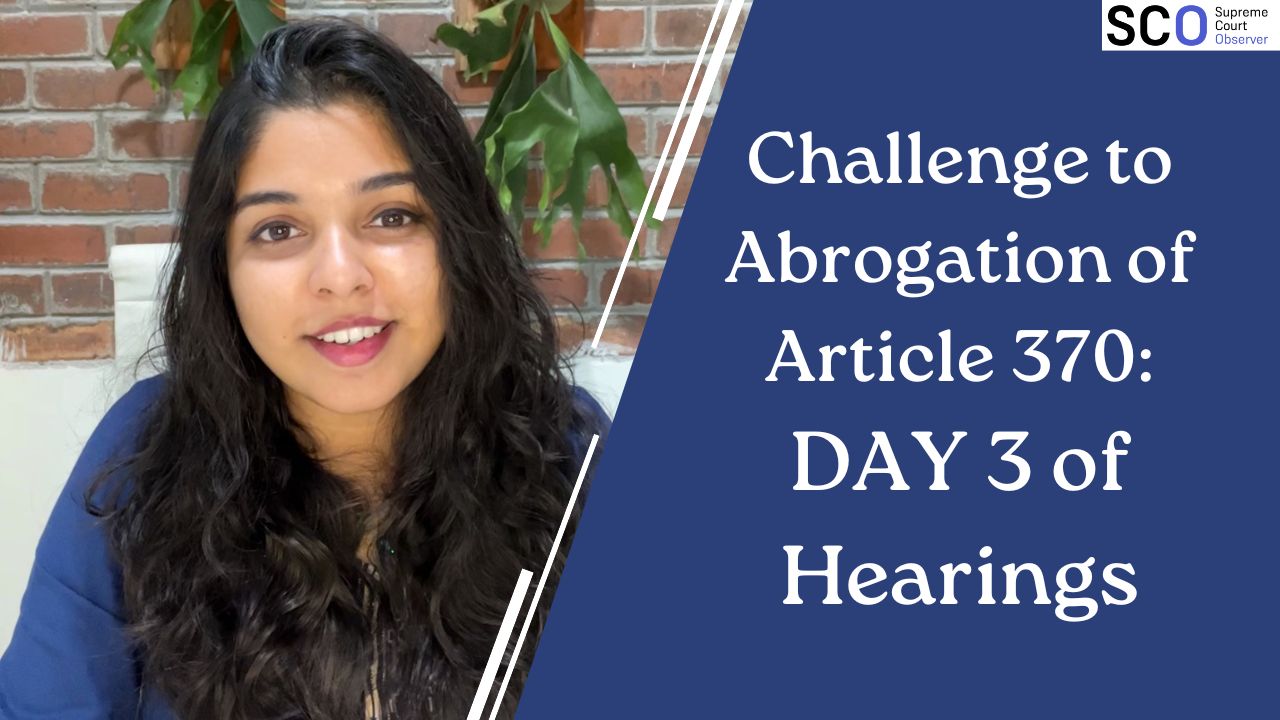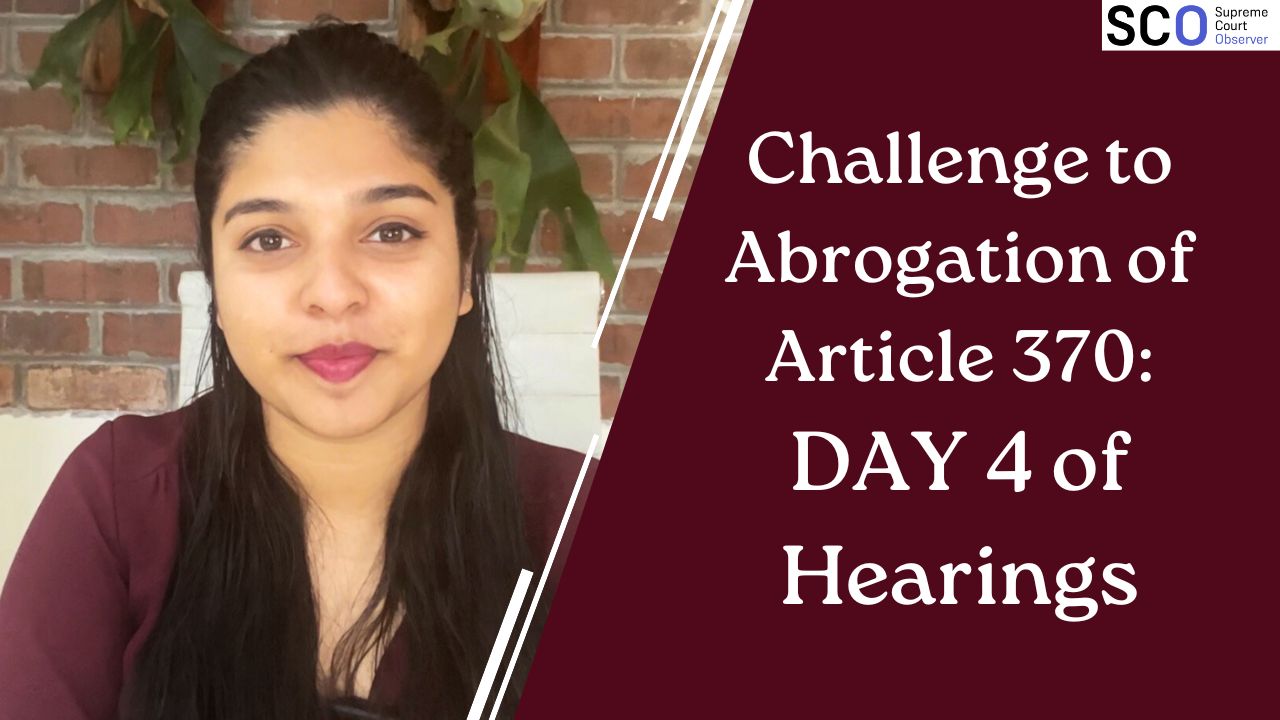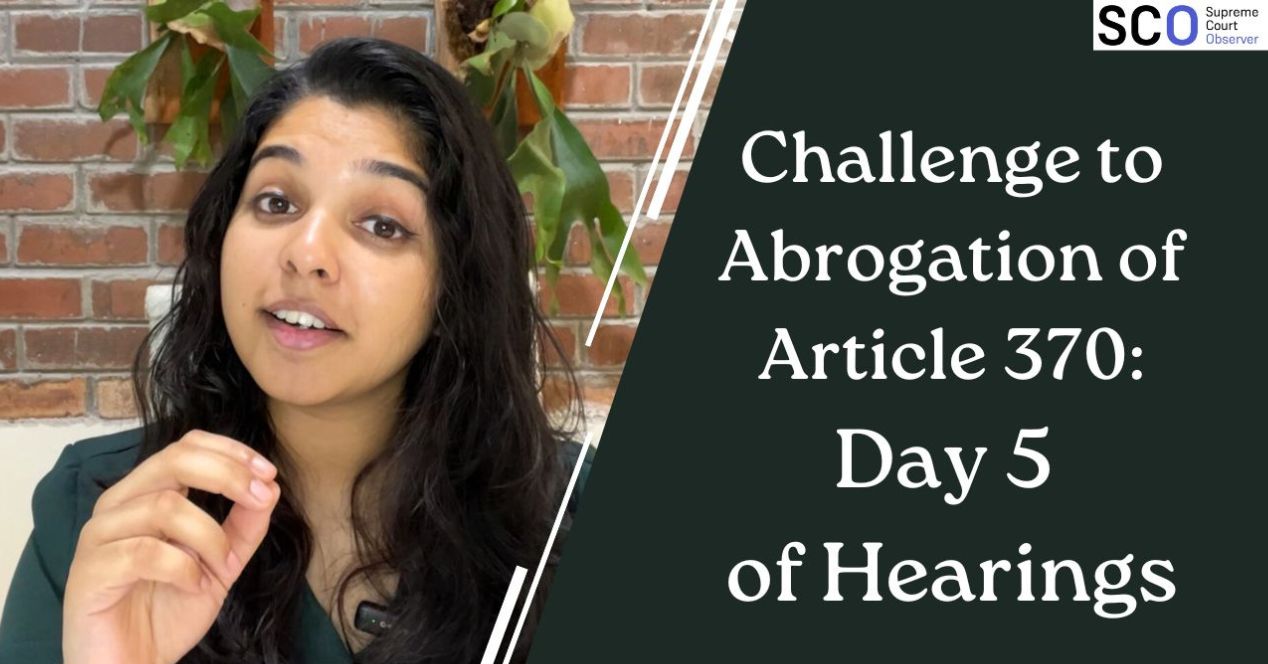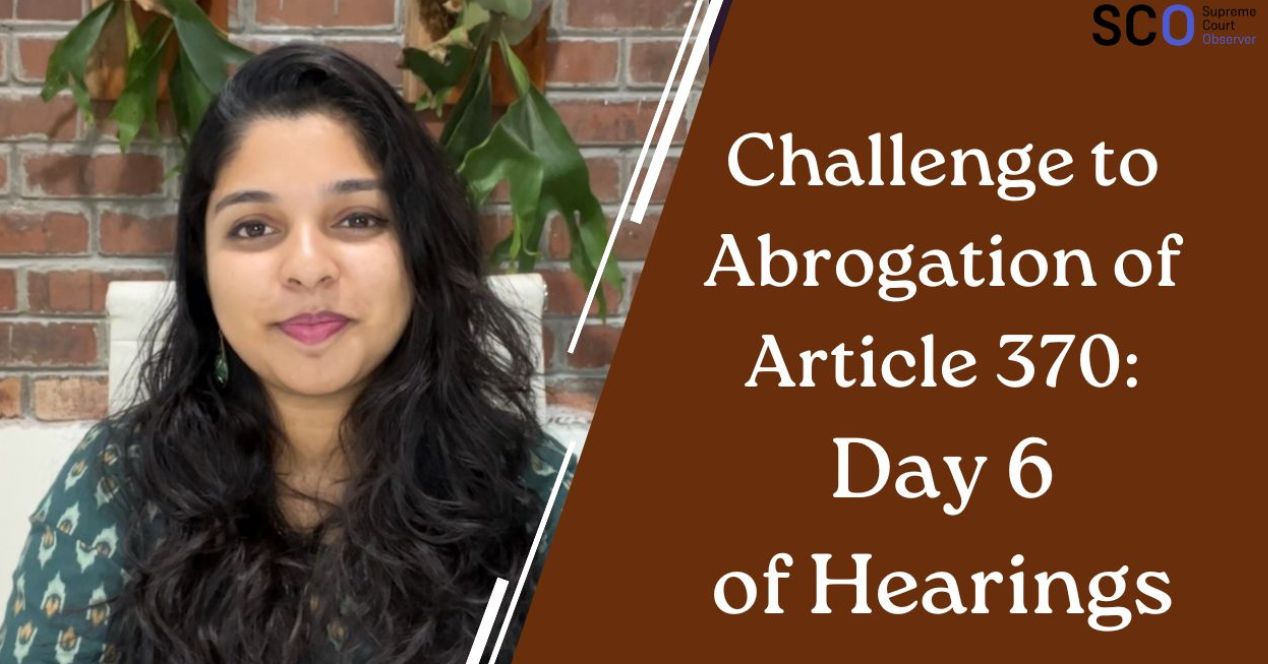Channel
Supreme Court Hears Challenge to Abrogation of Article 370 | Day 7
Senior Advocates Dave, Naphade and Dwivedi highlighted the adverse consequences of the abrogation of Article 370.
Transcript:
Hello and welcome to SCO’s breakdown of Day 7 arguments in the challenge to abrogation of Article 370. Senior Advocates Dushyant Dave, Shekhar Naphade and Dinesh Dwivedi argued against the abrogation today.
Carrying on from the arguments advanced on previous days of the hearing , Dave said that President’s Rule cannot be used to reorganise Jammu and Kashmir under Article 3. Dave submitted that when the J&K Constituent Assembly was dissolved in 1957 without repealing Art. 370, any opportunity to remove the provision was lost, both by the Union of India and J&K state. 370(2) and 370(3) had already served its purpose—the Constituent Assembly created a Constitution for J&K, and chose to retain Article 370. There is a counter-argument that India’s Constituent Assembly had designed Article 370 to be a ‘temporary provision.’ Dave addressed this, saying that ‘temporary’ only referred to the temporary possibility that the Constituent Assembly may remove the provision. But of course they eventually decided to keep it]
Dave then drew the Court’s attention to BJP’s 2019 election manifesto. Here, the Party had promised the abrogation of Article 370. Dave pointed out that manifestos cannot be contrary to constitutional values. The ruling party could not abuse their majority in Parliament to abrogate Art. 370 contrary to the Constitution to give effect to (an unconstitutional) promise made in a manifesto. Having made this point in passing, Dave completed his arguments.
Shekhar Naphade then began his arguments with three broad focus areas. First, he stated that the core of the J&K Constitution must remain. This included Part 2 which dealt with the State’s relationship with India and the territory of J&K and Part 5 and Part 6 which set out the powers of the executive and legislature of J&K. He argued that there is no express provision in the constitution of India which allows the Union to abolish the J&K constitution.
Second, he focused on the reorganisation of J&K state into the Union territories of J&K and Ladakh. He said that it was apparent that the President’s Rule was invoked with a collateral in mind. President’s rule is invoked when there is a breakdown of Constitutional machinery. So any act must be done in pursuance of the goal set under Article 355 of the Constitution—which is to ensure that the State as a constitutional entity must survive. Splitting J&K and making it a Union Territory was not in line with this goal.
Third, he pointed out that there was a specific reason that Article 3 did not provide for the abolition of states. Article 1 calls India a ‘Union of States’. The existence of a state, he said, was part of the basic structure of the Constitution. J&K cannot be considered to be an exception to this.
Naphade went on to list out the consequences of reorganisation. First, after reorganisation, Ladakh has no representation in the Rajya Sabha. Second, irrespective of its population J&K does not have proportional representation in the Lok Sabha. Third, J&K has no MLAs in the electoral college for the voting of the President. Fourth, J&K has no representation in the GST council. Fifth, J&K has no governor, and hence will not be consulted for the Appointment of HC judges. He stated that by a very small act, that is, the Presidential Order CO 272, the whole constitutional fabric of J&K is restructured.
In his brief submission at the end of the day, Dinesh Dwivedi claimed that according to Article 1, though Union Territories were part of India, they were not part of its federal structure. A federal structure, Dwivedi argued, establishes a system of dual polity where the local government is responsible for local issues and the Union government for national issues. However, this was not the case for Union Territories as they are governed by the Union. So, states and Union Territories had a different constitutional status. J&K was undoubtedly a part of India’s ‘federal structure’ as it had elevated levels of autonomy. By reducing the State into two Union Territories, the Union breached the federal structure and dual polity. It took the rights conferred on the people of the state and converted it into a ‘unitary polity'”.
Visit SCObserver.in for a detailed report on the day’s hearings. Make sure to follow us on twitter where we give contextualised live updates. You can also subscribe to our daily whatsapp updates. We promise not to spam you. We’ll just start your day off, with the most important updates of the day, at 9AM Sharp. Thank you for watching SCO Daily!

